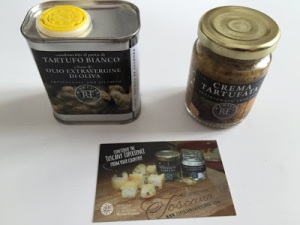For those of you who follow me on Instagram, you know I love my avocado toast. Today, I’m sharing how I whip up a fast yet satisfying meal with this tutorial! First stop, the ingredients. You’ll need one avocado (obviously haha) as well as one or two eggs (I ended up using two with one for each slice of bread but could also use one and make a sandwich). For bread, this’ll depend on what kind you are using. For example, in this version I used sour dough and was able to use one slice per half of the avocado. When I used wheat bread, the slices were not large enough to carry that much avocado on them so I used four slices and split each half of the avocado in half for each slice. Had I not done that, the slices would have cracked and things would’ve gotten messy. To cook with, choose any oil you prefer – I chose coconut oil since it’s healthy and also has a high smoke point (so it’s harder to burn food with). I topped the toast off with some sea salt, ground black pepper and red chili flakes for a little kick – again, these you can shift to your liking.

First step, toast your bread. The bread doesn’t really need to be crazy hot to enjoy this dish but does need to be hard so it can have a nice crunch with the gushy avocado. In the mean time, cut the avocado into two halves (and if needed cut in half again depending on how many bread slices you’re using). Be very careful as you need to move the avocado in a circle as you cut (the seed is too big to just cut right through). It should look similar to the picture below. After that, remove the seed and scoop out as much as you can. Best way to do this is to take a spoon and carve around the inside edge all the way around – it should just pop out altogether.


Now that the avocado is de-skinned, plop each half onto a bread slice and mash with a fork – quicker than a knife and looks cool. Ta dah! On to the eggs…

Add 2 spoonfuls of oil to a small skillet pan with low to medium heat. Once the oil liquifies, add the egg. Be sure to drop it in as close to the pan as possible so that the impact doesn’t cause the oil to splash you (like it did to me, ugh). Once everything solidifies (clear to white), you’re ready to serve it on the toast.


Now that the eggs are on their slices, season to taste. I usually did the salt first, then the pepper and finally the chili flakes – that way I could monitor how much spice I wanted. Make sure a little of each makes it to the avocado as well as the egg, that way you’re not left flavorless on the parts where the egg doesn’t reach.



DONE! Yay!!! Now the best part, breaking the yolk! This is the best tasting part of the toast according to my preferences but fair warning it does get messy fast. I usually try to spread it across the toast if I can and also fold it over like a sandwich to dip into the yolk that fell on my plate. Mmm..



Now you’ve got a quick and easy, oh-so-tasty treat to make before running off to work. If you end up making this for yourself, send me a picture! I’d love to see how you did it 🙂
Thanks and see you next post!









